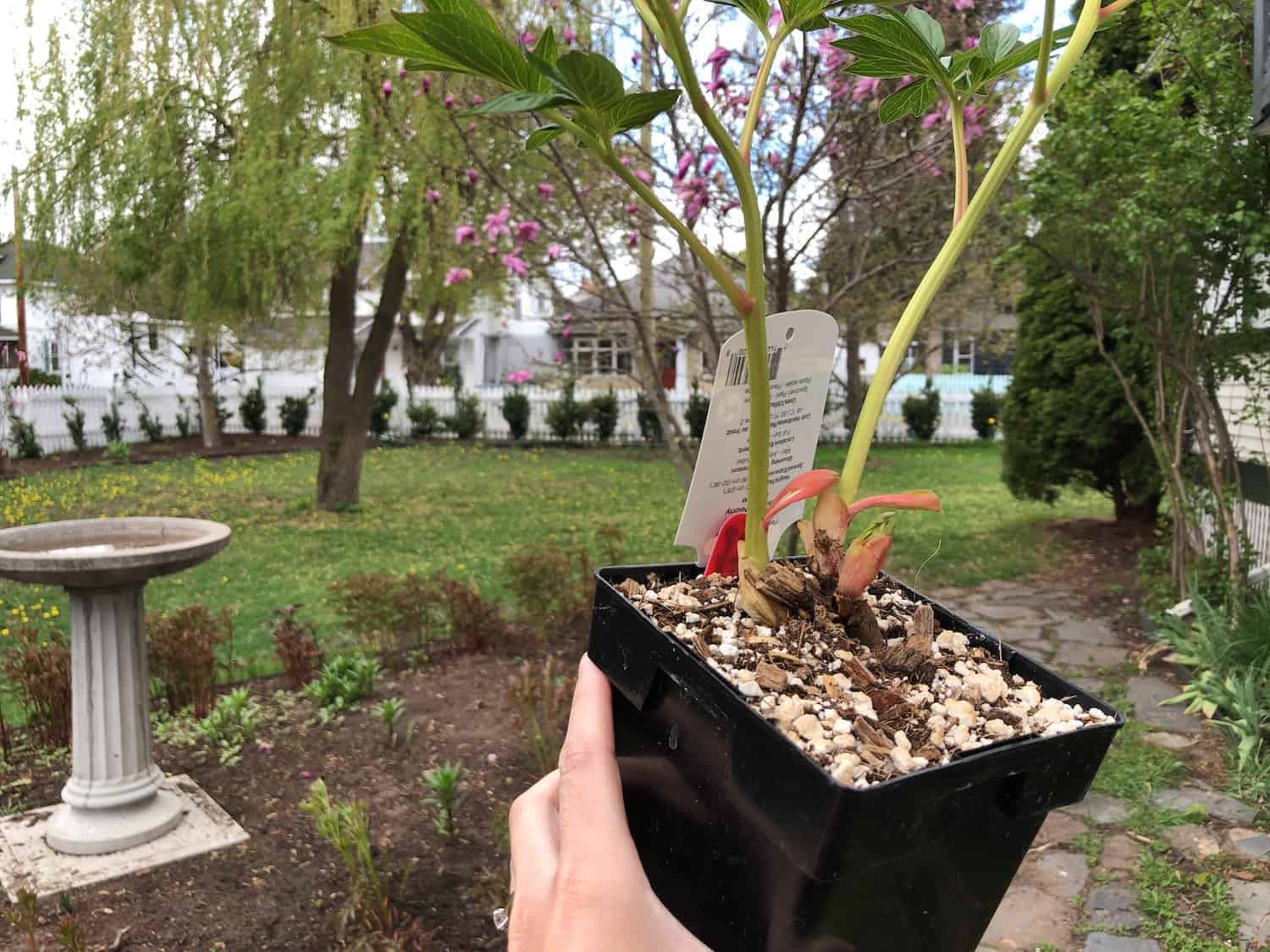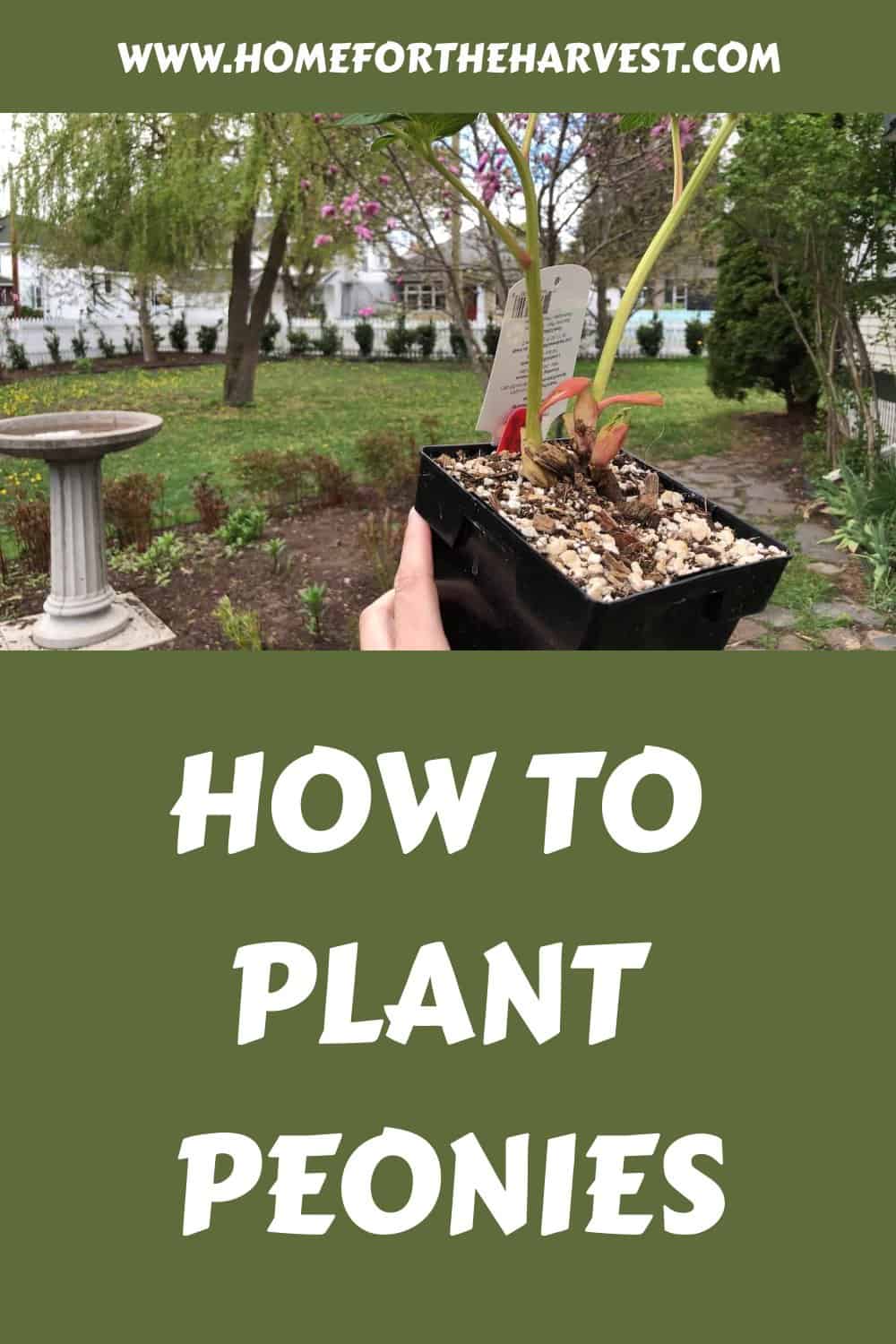Peonies are low-maintenance perennial plants that thrive in Zones 2-8. They do best when planted in a sunny spot where the soil drains easily. The ideal seasons for planting are early spring and early fall.
Peonies are generally planted in wide, shallow holes. They typically grow best when watered deeply after planting and the surrounding soil is covered with a thin layer of organic mulch.
Where to plant peonies
Choose a planting spot for the peony where the leaves will receive 6-8 hours of direct sunlight per day. A full sunlight planting location will allow for maximum photosynthesis, resulting in a wonderful show of spring blooms. In warmer areas with harsh afternoon sun, some shade during the afternoon/evening can help the flower blooms last longer on the plant.
Secondly, choose a location with water in mind. The peony should be close to a water source for easy watering or, ideally, located along a drip irrigation line for consistent moisture. Secondly, the soil in this location should drain water easily. While peonies are tolerant of clay soil, they are not tolerant of growing in puddles of water. Some gardeners make a mounded flower bed with loamy garden soil that’s elevated above the surrounding area, allowing for easy drainage.
Other factors to look for when choosing a planting location for your peony include garden design, interaction with other plants, pressure from weeds, and wind exposure. Peonies have gorgeous flowers and are generally planted in a location where the blooms can be seen and enjoyed. However, the roots of these plants do not enjoy competition from trees, shrubs, or weeds, tending to grow best when the roots have room to spread out and access nutrients and moisture. Lastly, the heavy flowers and herbaceous stems are prone to blowing over in strong winds, making sheltered planting spots preferable.
“Plan carefully before you plant your peony. They have been known to live happily in the same spot for more than 50 years, and they strongly resent having their roots disturbed.”
Peonies, by Pamela McGeorge
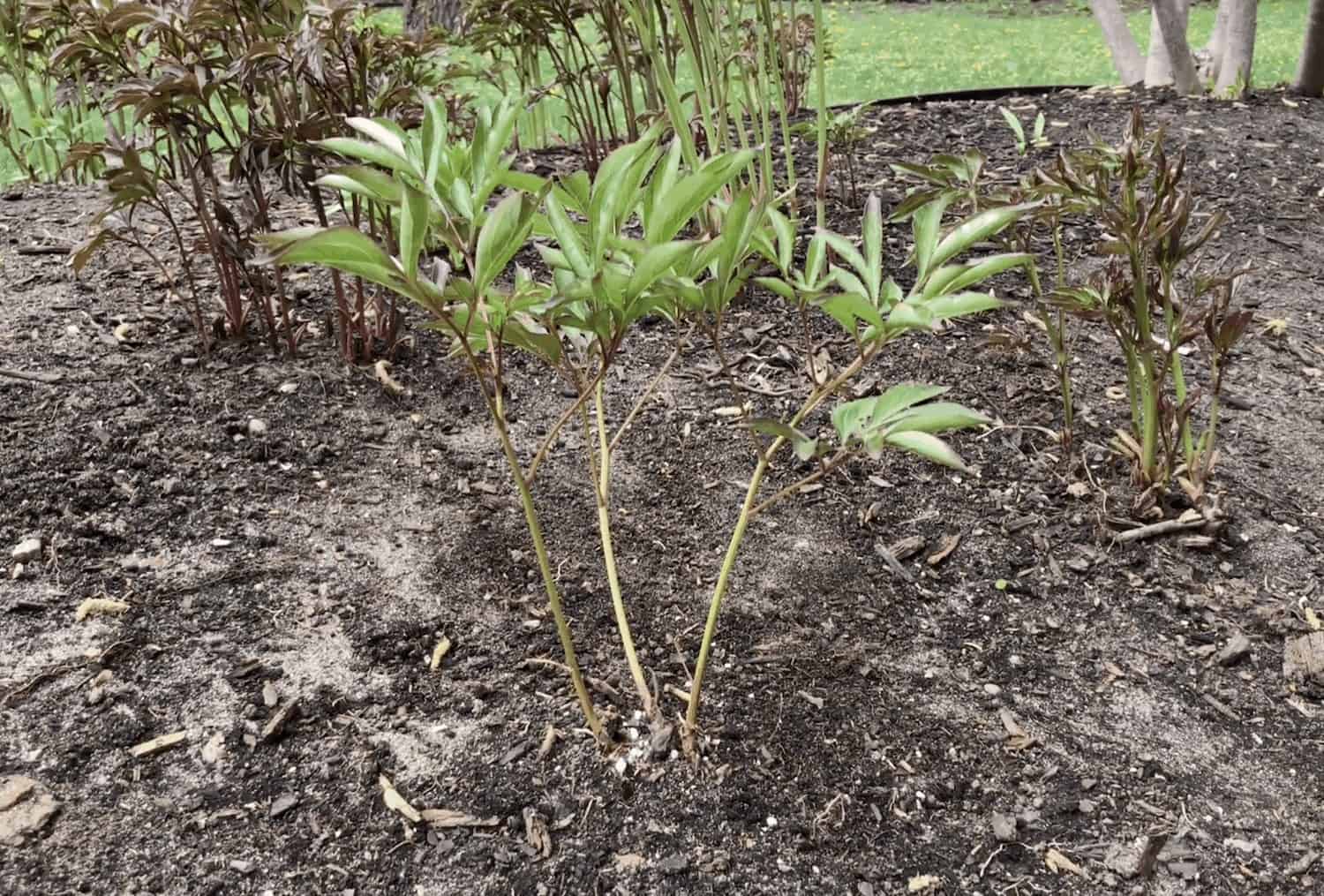
How to plant peonies
Once the planting location has been chosen and cleared of any weeds or other plant debris, it’s time to dig a planting hole.
Planting holes for peony plants should be wide but not too deep. Aim for a hole that’s twice as wide as the plant pot that the peony is currently in. The hole should be only as deep as the potting mix inside the planter pot.
Remove the peony plant from the nursery planter pot and examine the root ball. Potted peony plants are rarely root-bound, but if there are lots of visible roots on the outside of the root ball, they can be loosened up.
Place the root ball in the hole. Check the soil levels. The elevation of the potting mix around the base of the stems should line up with the elevation of the soil surface surrounding the hole.
Gently backfill the planting hole with the soil that was dug out of it. Try not to leave air pockets, but don’t press on the plant’s roots, either. Once the hole has been backfilled, water the soil over the entire planting area. If the soil in the hole has settled significantly, top it up to the level of the surrounding soil. After watering, mulch the top of the soil with a thin layer of organic garden mulch, such as homemade compost.
Here is a video showing exactly how to plant potted herbaceous peony plants in the garden:
How far apart to plant peonies
Peonies are most commonly planted 3 feet apart, from center to center. This spacing allows for decades of plant growth while still packing lots of blooms into a small space. While different types of herbaceous peonies have different full-grown estimated widths (spread), most varieties are about 30″-36″ (2.5 to 3 feet) in diameter when mature.
Peonies may be planted 2 feet apart in certain scenarios, such as where a short-term flower mass is desirable, space is limited, or a future move is anticipated. In larger spaces, cutting gardens, and legacy flower farms, peonies are usually planted more like 4 feet apart. This wider spacing allows for good air circulation and expansion space as the plant ages.
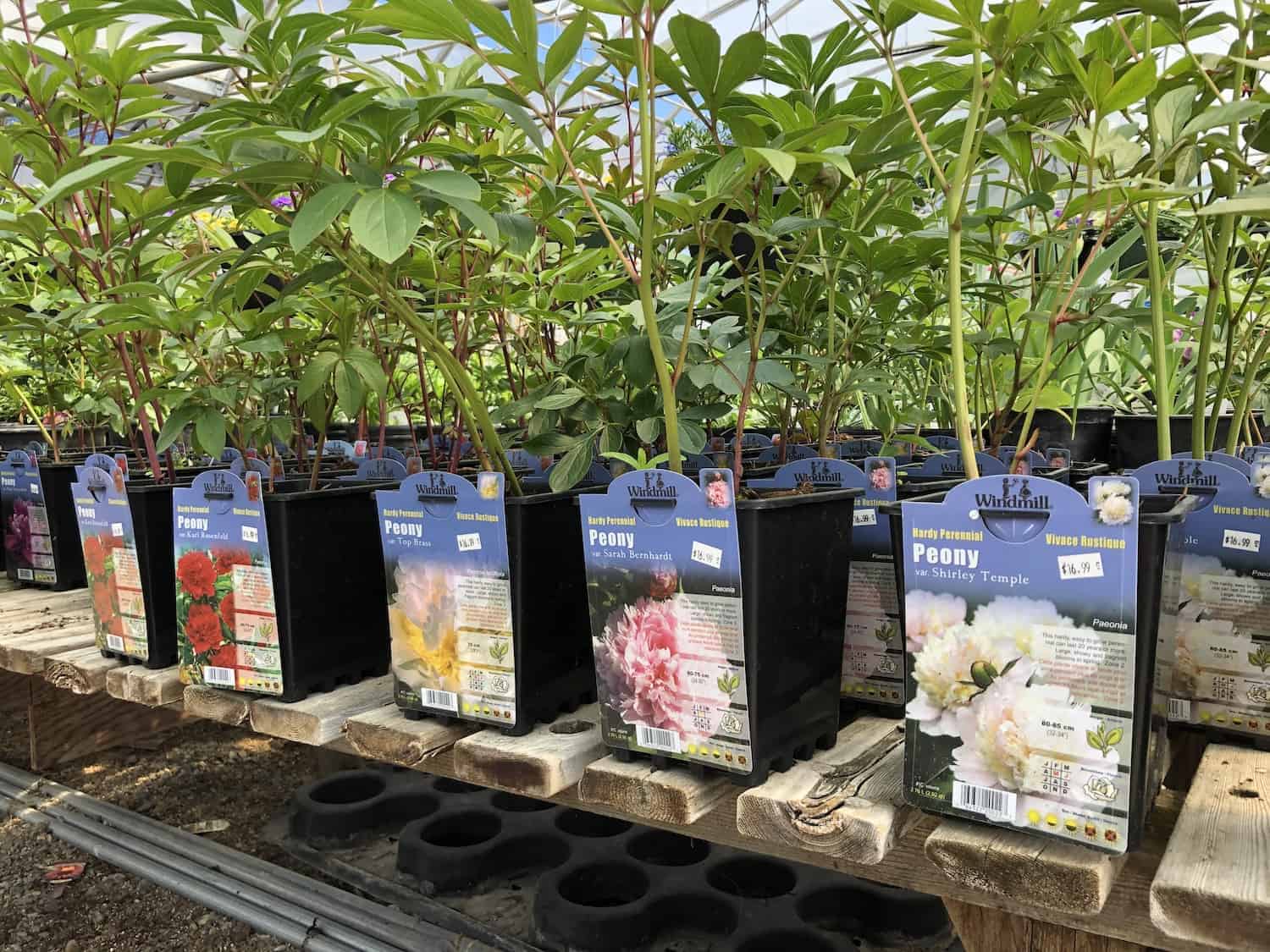
The best time to plant peonies
The best time to plant peonies is in the fall. Many specialty plant nurseries ship their peonies in the fall so they can be planted at this optimal time. In many climates, September and October are ideal months for planting.
Autumn is a great time to plant peonies because the soil has warmed, the harsh heat of mid-summer has passed, and the roots have comfortable fall conditions to become established in the soil. Peonies are generally planted any time from late summer to mid-Autumn. Peony roots have the best chance to become established in the soil when planted at least six weeks before the ground freezes.
While fall is preferable, sometimes the right types of peonies appear at the garden center in early spring. Peonies can also be planted in early spring but generally don’t grow as quickly as fall-planted roots. Fall planting is preferable for peonies, but the garden center availability is better in spring. If possible, avoid planting peonies during the heat of summer. If you must, be sure to water the new plants thoroughly on a regular basis.
Gardeners commonly pick a few different types of peonies to plant together as a group. Choose early bloomers, mid-season bloomers, and late-blooming peonies for an extended season of flowers.
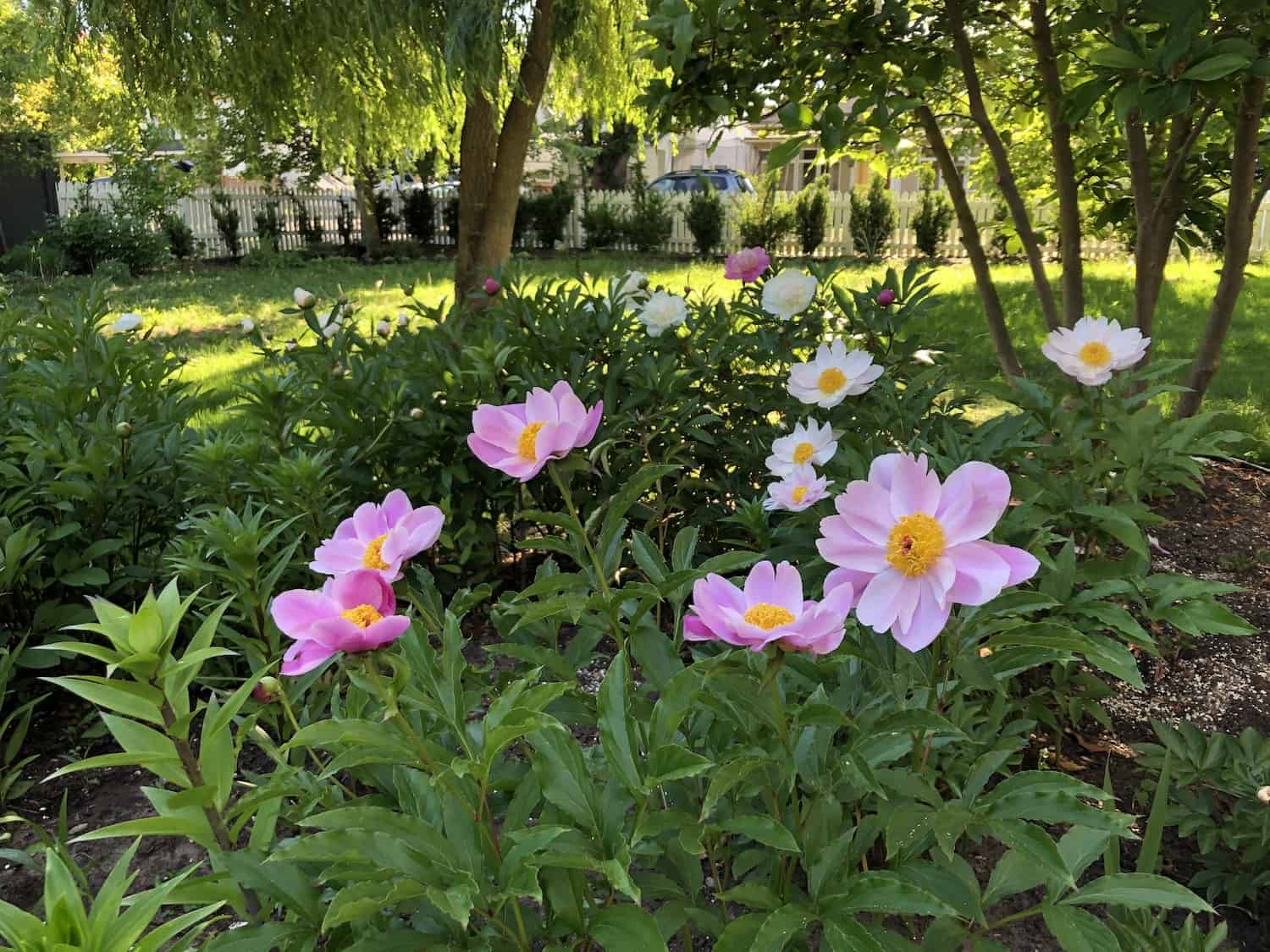
Caring for newly-planted peonies
Newly planted peonies should be watered regularly for the first year or two after planting. Take the opportunity to check that the soil is draining well (not waterlogged). Water deeply once a week in most conditions, and consider watering more often in particularly hot and dry spells. A good mulch over the soil can help keep moisture in, keep weeds down, and stabilize soil temperatures.
In mid-spring, peony plants can be fertilized with organic rose food or flower fertilizer. Peonies are typically fertilized when the stems are about a foot tall and the thin baby leaves are just starting to unfurl at the top. Peonies can also be fed again in late summer if grown in nutrient-deficient soil. Read more about fertilizing peonies.
Spent peony blooms should be deadheaded with sharp pruning shears. Try not to remove any leaves from the plant (just the spent blooms and a bit of stem). The newly planted peony needs its leaves to make energy to help the roots become established in the soil.
Peonies can be deadheaded. remove spent bloom and a few inches of stem. but be sure not to remove any leaves for the first few years, as they’re needed for photosynthesis.
“Peonies don’t require complex fertilization, spraying, pruning, or dividing, and they can live a long, long time, with their hardy natures and beautiful blooms.”
Martha’s Flowers, by Martha Stewart & Kevin Sharkey
In late fall, once the leaves have turned yellow/brown and been either killed by frost or forecasted to have a hard frost, all above-ground peony foliage can be cut back to close to the ground. Leave a few inches of stems to indicate where the plant is. Peony plants are quite hardy and need no winter protection except in the coldest zones. Peony plants in Zones 2-3 may benefit from a thick layer of protective mulch applied over the plant after the ground freezes.


